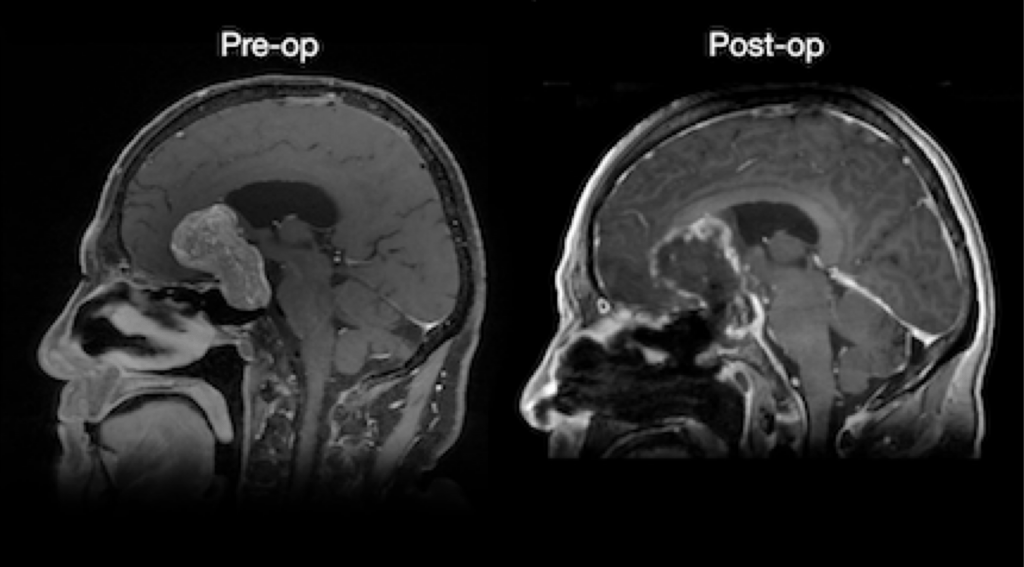From the University of California, San Francisco, (UCSF) MedConnection comes a fascinating article about a patient with a giant pituitary adenoma removed via endoscopic endonasal surgery. The article explains the surgeons used a 30-degree angled endoscope, which offers great visualization without causing any trauma to the frontal lobe underneath the tumor. Click here to read the article.
A 74-year-old man hospitalized with pneumonia was hyponatremic with low cortisol levels. An MRI scan revealed a 4.8-centimeter giant pituitary adenoma. The patient had a history of blindness in the right eye and was experiencing progressive vision loss in the left eye. The patient’s hormonal workup showed panhypopituitarism. After a referral and a consultation to the California Center for Pituitary Disorders at UCSF, a specialized neurosurgery and neuroendocrine team decided to move forward with surgery. An endoscopic endonasal approach was undertaken by neurosurgeon Manish Aghi, MD, Ph.D., and otolaryngologist Ivan El-Sayed, MD. “The endonasal approach has revolutionized pituitary surgery,” Aghi said. “It is extremely minimally invasive. We’re able to gain access to the pituitary gland within less than an hour, and the tumor removal takes less than two hours.
You can learn more about Dr. Aghi’s and Dr. Kunwar’s work and the endoscopic and microscopic approaches to pituitary surgery in these Pituitary World News articles featuring UCSF’s center for pituitary disorders neurosurgeons and physicians. You can also watch additional video presentations from the PWN-UCSF patient conference here, where there are several discussions about pituitary surgery techniques.
According to the UCSFMed Connection article, the patient was in the hospital for three days. Since the surgery, he has been taking levothyroxine to combat fatigue. The patient’s vision had improved slightly from its preoperative state, and doctors expect his energy to improve over the next few months as the empty resection cavity collapses over time, further decompressing the frontal lobes. Read the complete article here.
© 2022 – 2024, J D Faccinetti. All rights reserved.
